Top 10 Best Textile Companies In India In 2022
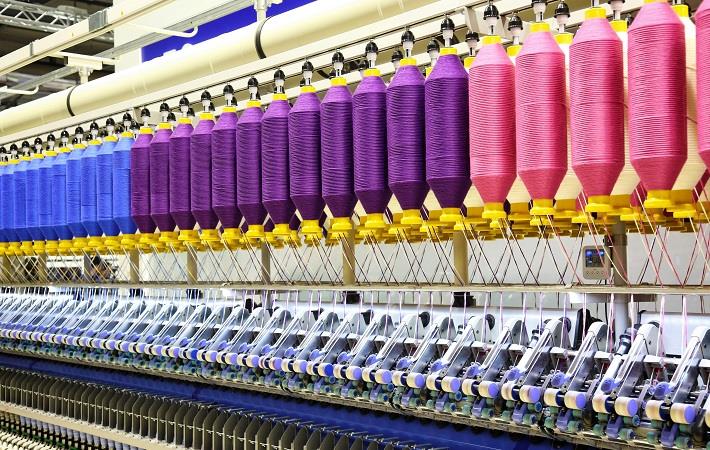
Top 10 Best Textile Companies In India In 2022
A woven or knitted cloth made from yarn is a textile. On the other hand, textiles are defined as anything made from fibre, yarn, cloth, or any different combination of these materials. Textiles are also employed in clothing production. Fibre is the raw material for textiles, and it can be natural or synthetic.
Textile Industry Definition
Textiles, fabrics, and apparel are part of the textile industry, including research, design, development, manufacturing, and distribution. Before the Industrial Revolution, individuals manufactured fabrics and apparel were manufactured in the house by individuals for personal use before the industrial revolution.
They were occasionally resold on a modest scale. The textile industry was born by creating the flying shuttle in 1733, the spinning jenny in 1764, and the power loom in 1784. Then mass-production of materials and garments began. When James Watt refined his steam engine in 1775, Eli Whitney invented a cotton gin in 1792. Elias Howe invented the sewing machine in 1846. They all contributed significantly to the textile industry’s prosperity.
The textile industry has evolved into a global phenomenon encompassing all businesses involved in developing, producing, manufacturing, and distributing textiles. It is now a highly complex industry. Agriculture begins with fibre production, sheep and silkworm rearing, and metal and mineral mining. These fibres are then turned into yarns, textiles, and clothing. Spinning mills, weaving mills, knitting mills, dyeing mills, and clothing are all included. This industry also has enterprises that sell buttons, zippers, knitting materials, sewing machines and threads, laces, looms, and drapery hardware.
Textile Industry Departments
Now we’ll look over the departments of the textile business in more detail as follows:
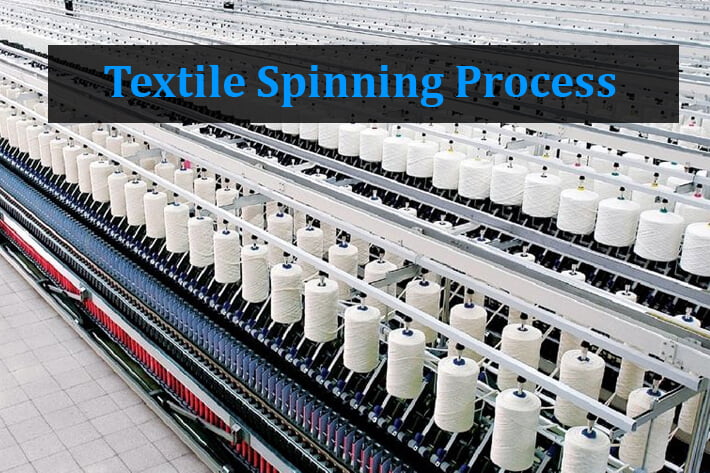
Spinning
Spinning is the process of converting natural or synthetic fibres into yarn. Blow room, carding, drawing, combing, simplex, and ring frame are just a few of the procedures in the spinning sector. The blow room is the starting phase in the spinning process. The cotton bale is transformed into a homogenous lap of a specific length by opening, washing, blending, or mixing. Carding is the next stage. Carding is sometimes called the “heart” of spinning. Drawing is the third phase. Slivers are blended, multiplied, levelled, and drafted in this step. Combing is the next stage. It’s a way for straightening and parallelising fibres and removing short fibres and contaminants.
After that, there is a simple step. Slivers are thinned out and given a slight twist in this technique. The slivers are then transformed into roving. The ring frame is the final step. The roving is wound onto bobbins and placed in the ring frame, where it goes through many sets of high-speed rollers before being drawn out to yarn.
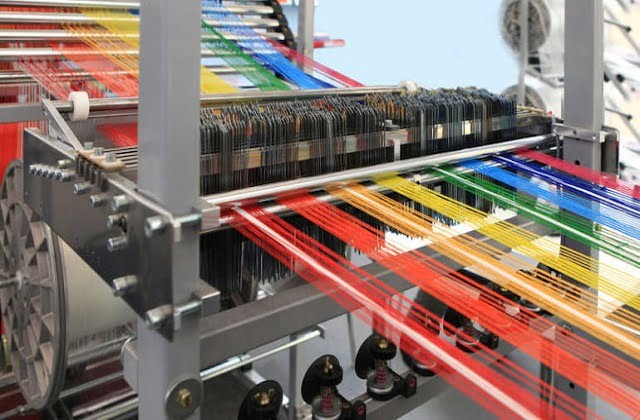
Fabric Manufacturing
There are different methods of fabric manufacturing. Weaving and knitting are the most known among them. The most common form of fabric production is weaving. Before spinning, the technique was presumably well-known. Primitive people may have discovered how to manufacture clothing by observing the grasses and twigs found in bird nests. Spinning arose from the realisation that raw materials may be enhanced before being woven. Rude looms, which were crudely simplistic and hand-operated, were created over time. Different modern looms have been invented in recent years, but they all essentially fulfil the same function as a traditional hand-operated loom.
Winding, warping, sizing, and looming are all components of the weaving department. Knitting is the second most popular form of fabric production. Knitting’s popularity has skyrocketed in recent years, thanks to the greater diversity of techniques, the adaptability of many new artificial fibres, and rising customer demand. Knitted textiles are now used in hosiery, undergarments, sweaters, pants, suits, and coats.
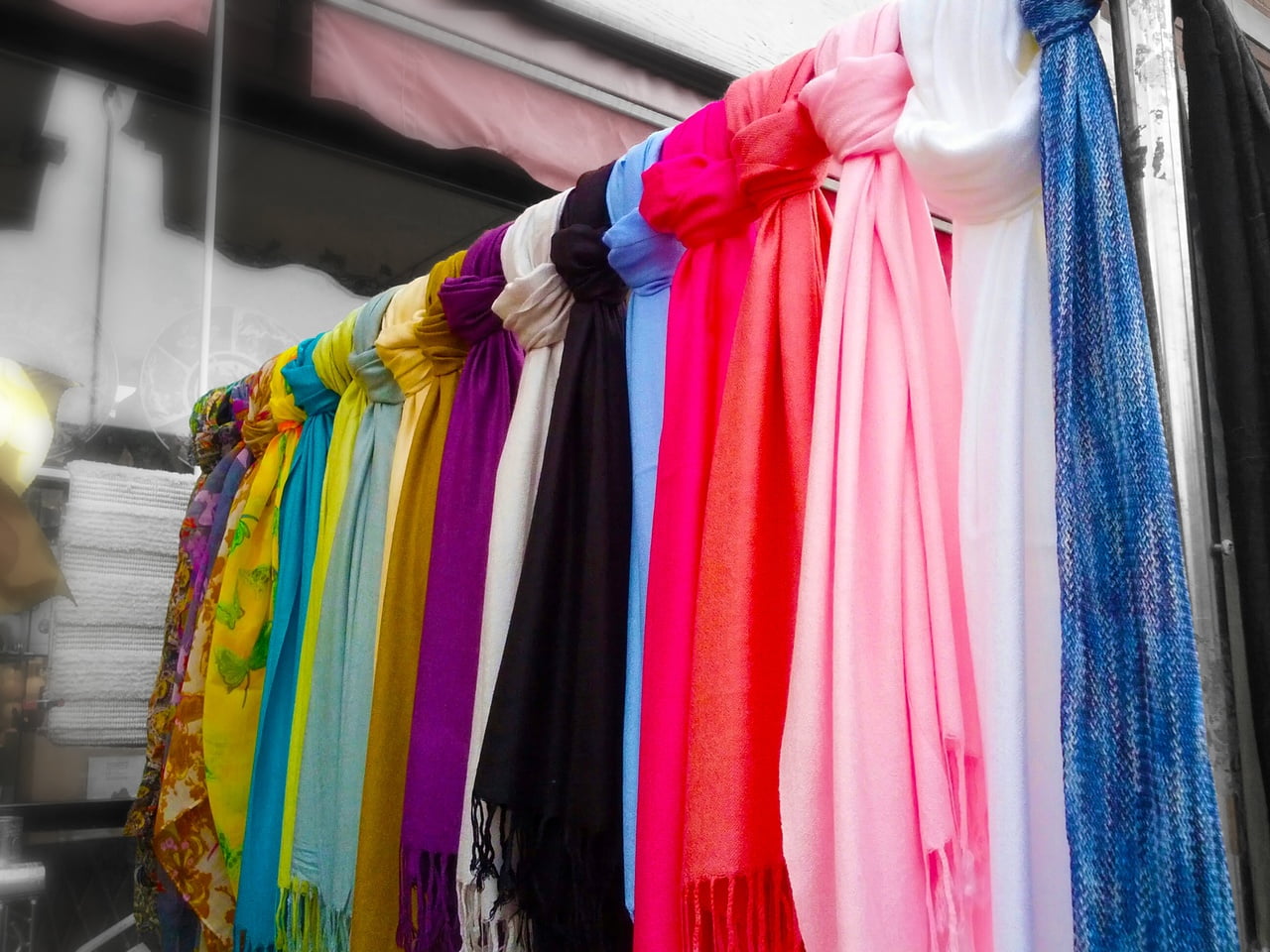
Wet Processing
Desizing, scouring, bleaching, washing, mercerising, dyeing, and other processes are carried out in the wet processing section. Desizing is the process of removing sizing materials. Scouring is done with alkali to remove lipids, oil, and wax. Bleaching is used to remove the fibres’ natural colour. Washing cleans the textile material, mercerising makes the fabric brighter than bright, and dying makes the fabric mono uniformly coloured. Machines like the Kier boiler, J-box, Jet, Jigger, Pad mangle, Winch dying machine, and others are employed in the wet processing area.

Garments Manufacturing
Clothes manufacturing technology refers to the methods and procedures for mass-producing garments in a commercial environment on a large scale in an industrial setting. Clothing manufacturers include woven garment factories, knit garment factories, and sweater garment factories. The woven garments factory is where woven materials are used to make apparel. A factory that creates clothes out of knitting fabrics is a knit garments factory.
Name of some common sewing machines used in manufacturing are mentioned below:
- Lock stitch sewing machine
- Chain stitch sewing machine
- Overlock sewing machine
- Flatlock sewing machine
- Blind stitch sewing machine
- Bar Tac sewing machine
- Buttonhole sewing machine
- Button attaching machine
- Label sewing machine etc.
Though garment manufacturing is a large part of this business, many others are developing new designs and promoting them. Various textile companies make Sheets, blankets, pillowcases, and towels. The textile business also includes the import and export of materials and garments. In addition, buyers for clothes designers and manufacturers frequently travel worldwide searching for the proper fabric for their designs. Locally made materials differ from one country to the next.
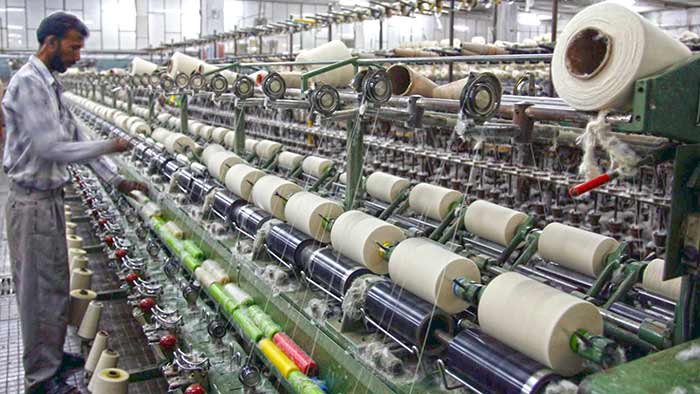
Textile Industry In India
- India is one of the world’s top textile and apparel producers.
- India’s domestic clothing and textile sector produces 5% of the country’s GDP, 7 per cent of industrial output in value terms, and 12% of the country’s export revenues. India is the world’s sixth-largest exporter of textiles and apparel.
- India is one of the world’s leading producers of cotton and jute. India is the world’s second-largest producer of silk, accounting for 95 per cent of all hand-woven cloth. The Indian technical textiles market is about $16 billion, or around 6% of the global market.
- India’s textiles and apparel industry is the country’s second-largest employer, employing 45 million people directly and another 100 million in affiliated businesses.
- India is now the world’s second-largest producer of personal protective equipment, surpassing China (PPE). More than 600 Indian companies are competent to produce personal protective equipment now, with a global market worth more than $92.5 billion by 2025, up from $52.7 billion in 2019.
- FDI in India’s textiles and apparel industry has reached $3.75 billion through March 2021.
- India’s textile and clothing exports are predicted to exceed $100 billion in the next five years, with a CAGR of 11%.
- Seven major textile parks have been proposed to quadruple the size of India’s textile and apparel sector to $190 billion by 2025-26.
- Since 2015-16, the Indian technical textiles industry has grown at a CAGR of 10% and is expected to reach $20 billion in 2019-20.
- The domestic technical textile market for synthetic polymer was worth $7.1 billion in 2020 and is expected to grow at a CAGR of 7.2 per cent to $11.6 billion by 2027, up from $9.5 billion in 2020, while the domestic technical textile market for wovens is expected to grow at a CAGR of 7.4% to $15.7 billion by 2027, up from $9.5 billion in 2020.
Industry Scenario
- By 2025-26, the textile and clothing sector will have grown from $103.4 billion in 2020-21 to $190 billion.
- This industry in India is strong across the entire chain, from fibre to yarn to fabric to clothing. Traditional handloom, handicrafts, wool, silk items, and India’s organised textile industry are part of the Indian textile and garment sector. Spinning, weaving, processing, and apparel manufacturing are all part of India’s organised textile industry, which is defined by the mass production of textile items using capital-intensive equipment.
- The domestic textiles and clothing business created $108.5 billion in 2019-20, with $75 billion used domestically and $28.4 billion exported to the global market.
- Japan, Mauritius, Italy, and Belgium were the leading FDI donors in India’s textile sector from April 2016 to March 2021. (including dyed and printed textiles).
- Cotton cultivation employs 5.8 million people, with 40 to 50 million people used in allied businesses.
- In addition, the $75 billion in domestic spending was divided into three categories: clothing ($55 billion), technical textiles ($15 billion), and household products ($5 billion). Home textiles exports totalled $4.8 billion, fabric exports totalled $4 billion, yarn exports totalled $3.8 billion, fibre exports totalled $1.8 billion, and other exports totalled $2 billion, while apparel exports totalled $12 billion.
- In August 2021, the value of cotton yarn/fabrics/made-ups, handloom products, and other exports was $1297.82 billion, up 55.62 per cent from $833.95 billion in August 2020.
- RMG Of All Textiles exported $1235.11 billion in August 2021, an increase of 13.99 per cent above exports of $1083.53 billion in August 2020.
- Textiles & Apparel exports totalled $ 30449.85 million from April to December 2021, up 52 per cent over the same period in 2020.
- On the Government-e-Marketplace, a total of 1,77,825 weavers and artisans have registered (GeM)
Top 10 Textile Companies In India In 2022
Check out the following list of Top 10 Textile Companies in India:

Arvind Ltd
The Lalbhai Group’s flagship company, Arvind Limited, is a textile maker. Its headquarters are in Naroda, Gujarat, India, and it has units in Santej, Gujarat (near Kalol). Cotton shirting, denim, knits, and bottom weight (khaki) fabrics are all produced by the company. In 2011, it launched the Advanced Materials Division, specialising in technical textiles. It is the largest denim maker in India.
The current Chairman and Managing Director of the Arvind and Lalbhai Group are Sanjaybhai Lalbhai. In the early 1980s, he spearheaded the ‘Reno-vision,’ The business introduced denim to the Indian market, kicking off the Indian jeans revolution. Through its statewide retail network, it sells its brand’s like Flying Machine, Newport, and Excalibur and licenced foreign names like Arrow, Tommy Hilfiger, and Calvin Klein. Arvind owns the Arvind Store, Unlimited, and Megamart, selling company-branded apparel and accessories.
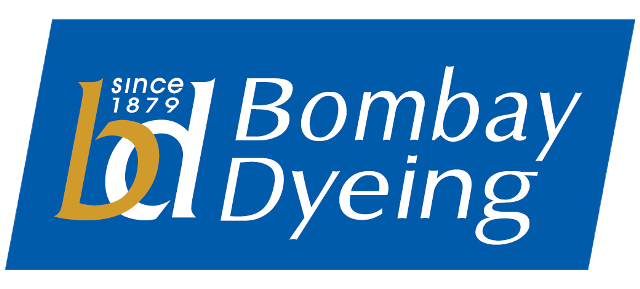
2. Bombay Dyeing and Manufacturing Company Ltd
Bombay Dyeing, founded in 1879, is the flagship enterprise of the Nusli Wadia Group. It was founded by Nowrosjee Wadia, who began small-scale operations with cotton yarn dyed in three colours: turkey red, green, and orange, and then dried in the sun.
It operates a distribution network of over 600 exclusive locations across the United States. It works in the textile and chemical industries. Bombay Dyeing is the country’s major textile exporter.
The company produces a variety of cotton and polyester suitings, shoe linings and duck textiles, satin furnishings, yarn coloured fabrics, towels, tabletops and napkins, satin bed sets, and more. Bombay Dyeing’s core business is textile manufacture, and the company has five facilities that meet international standards. It produces 300,000 metres of cloth each day.
Chemicals Bombay Dyeing is India’s largest Dimethyl Terephthalate (DMT) producer. It has a production capacity of 165000 tonnes per year (TPA). DMT is a raw material used to make polyester fibre, film, filament, yarn, and technical plastics.
Milestones
- The ‘Quality Management System’ of Bombay Dyeing has been certified by ISO–9002–1994.
- It has also achieved ISO–14001–1996, or ‘Environmental Management System’, certification.
- The BVQI’s ‘SAFETYCERT’ accreditation for ‘Occupational Health & Safety Management System’ has been awarded to it (OHSMS).
- For its great export success in poly-cotton blended fabrics and made-ups, the company has also received SRTEPC and TEXPROCIL Gold Trophies.
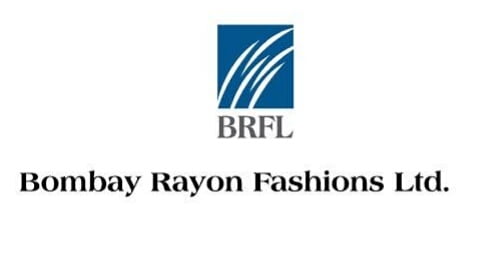
3. Bombay Rayon Fashions
Bombay Rayon Fashions Ltd is India’s most well-known vertically integrated textile firm. They have a massive presence in design, yarn dyeing, weaving, fabric processing, garment manufacturing, and retail value chains. The firm produces a wide range of fabrics and clothing. The company has 13 manufacturing sites, including one in Mumbai that serves as a sampling facility. They may be found in Bangalore, Karnataka, Navi Mumbai, Thane, Maharashtra, Silvassa, Dadra and Nagar Haveli, Silvassa, Dadra and Nagar Haveli.
Mudra Fabrics Pvt Ltd was incorporated as Bombay Rayon Fashions Ltd on May 21, 1992. The corporation was converted to a public limited company on October 13, 1992. The company was renamed Bombay Rayon Fashions Ltd on September 30, 2004.

4. Fabindia Overseas Pvt Ltd
Fabindia is an Indian retail business that sells clothing, furniture, fabrics, and cultural items manufactured by artisans in rural India. Fabindia began as an exporter of home furnishings before expanding into domestic retail in 1976. It established its first store in Greater Kailash, New Delhi, founded by John Bissell, an American working for the Ford Foundation in New York, Delhi. William Nanda Bissell, John’s son, is the company’s chairman. Fabindia had 327 outlets in India and 14 foreign stores as of July 2020.
Fabindia’s revenue in 2008 was $65 million, up 30 per cent from the last year. Fabindia sources its product from India through 17 community-owned companies, a certain percentage of the shares held by artisans and craftspersons.
Fabindia’s products are primarily obtained from villages, assisting in providing and maintaining rural jobs in India. Over 40,000 artists and crafters in India create them.
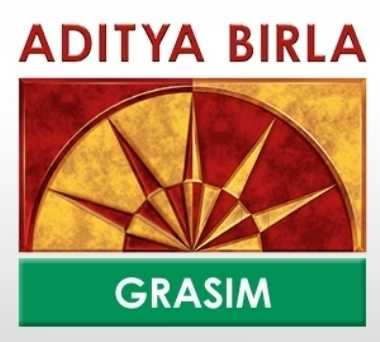
5. Grasim Industries Ltd
The world’s leading manufacturer of viscose rayon fibre is Grasim Industries Ltd. The organisation was founded in 1947 and is based in Mumbai, Maharashtra. It makes viscose filament yarn and viscose staple fibre. The largest private-sector corporation is part of the Aditya Birla Group. It supplies fabric to fashion houses in the United States and the United Kingdom to produce clothes. Since then, Grasim has expanded into several industries, including viscose staple fibre (VSF), cement, sponge iron, chemicals, and financial services, like asset management and life insurance. The firm is a subsidiary of the Aditya Birla Group.
With a market share of around 24%, Grasim is the world’s leading producer of viscose rayon fibre. Textiles and associated items account for 15% of the group’s revenue.

6. JCT
Thapar Group’s flagship company, JCT Limited, is a renowned textiles and filament yarn. JCT Limited is a market-driven corporation motivated by a good work ethic, values, and high-performance quality, with activities in two separate businesses: cotton, synthetic & blended textiles and nylon filament yarn. Because of this culture, the company has earned a reputation as one of the best in the country.
JCT Limited was the country’s first textile company to develop organic cotton fabrics, and its textile business was the first in the sector to be awarded an ISO 9001 certification in 1996. JCT Limited’s textile unit has grown into one of India’s leading textile producers in the five decades since manufacturing in 1946.
This division has made a mark on both the domestic and international markets, with an integrated textile plant in Phagwara (Punjab), a daily production capacity of 63 million metres per year, and a product line comprising of some of the finest cotton and blended textiles. This has been fueled by a goal to succeed in all aspects of the company’s operations, including spinning, weaving, processing, and strict quality control at each stage of production.

7. Karnataka Silk Industries Corporation Ltd
According to Karnataka Silk Industries Corporation Ltd, Mysore is noted for its rich cultural heritage. It generates silk of exceptional quality. It was created to promote silk as a cultural heritage. It has been producing high-quality silk for many years and distributes it all over India.
It produces high-quality silk that is admired throughout India. Silk Dhoti, Men’s Tie, Salwar Kameez, Silk Sarees, Kurta, and more items are some of the company’s offerings. You may receive more information about the organisation, like the number of employees, turnover, decision-makers details, and more, with Fundoodata paid plans.

8. Raymond Ltd.
In Mumbai, Maharashtra, Raymond Ltd is the world’s largest integrated fabric maker. In India, it controls more than 60% of the suiting market. It is also the largest manufacturer of woollen fabrics in India. The company’s textile segment has a distribution network of approximately 4,000 multi-brand outlets and 637 exclusive retail shops in the domestic market. Suitings are accessible in India through 30,000 shops in over 400 towns, and an entire chain is present in over 150 cities.
It sells to more than 55 nations, including the United States, Canada, Europe, Japan, and the Middle East. It offers over 20,000 suiting fabric styles and colours, making it one of a single firm’s largest collections of designs and colours. The Brand Trust Report named it India’s most trusted apparel brand in 2015.
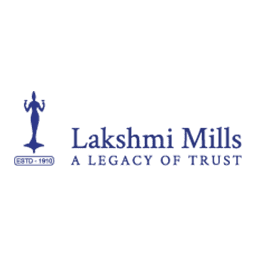
9. The Lakshmi Mills Company Ltd
Kuppuswami Naidu established the Lakshmi Mills Company in 1910. The company’s headquarters are in Coimbatore, Tamil Nadu. Textile yarn, textile clothing, weaving, and spinning are only a few things available. Laksmi Machine Works is its parent firm.
In Coimbatore, it has two composite textile units: Avinashi Road and Palladam and one in Kovilpatti. The mill’s founders were also essential in establishing several textile machinery firms, including LMW and medical and educational institutions. The unit in Papanaickenpalayam, Coimbatore, is a well-known landmark in the city.
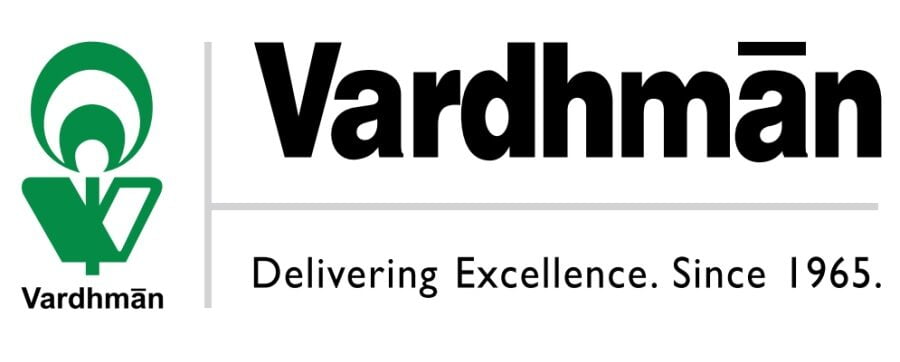
10. Vardhman Textiles Ltd
Vardhman Textiles Limited is a full-service textile company. The company manufactures cotton yarn, synthetic yarn, woven fabric, sewing thread, acrylic fibre, tow, and clothing. Two of the company’s segments are textiles and fibre. The company manufactures and exports patterned fabrics and cotton yarn. The company’s products include organic cotton, melange, core-spun yarns, ultra yarns, gassed mercerised, super fine yarns, slub and cellulose yarns, and fancy hand knitting yarns.
The company employs over 1.1 million spindles and has a total weight of roughly 580 metric tonnes (MT). The company’s manufacturing plants are located in Punjab, Himachal Pradesh, and Madhya Pradesh. The company provides its products all around the world, including the European Union, the United States, and Asia.
edited and proofread by nikita sharma




